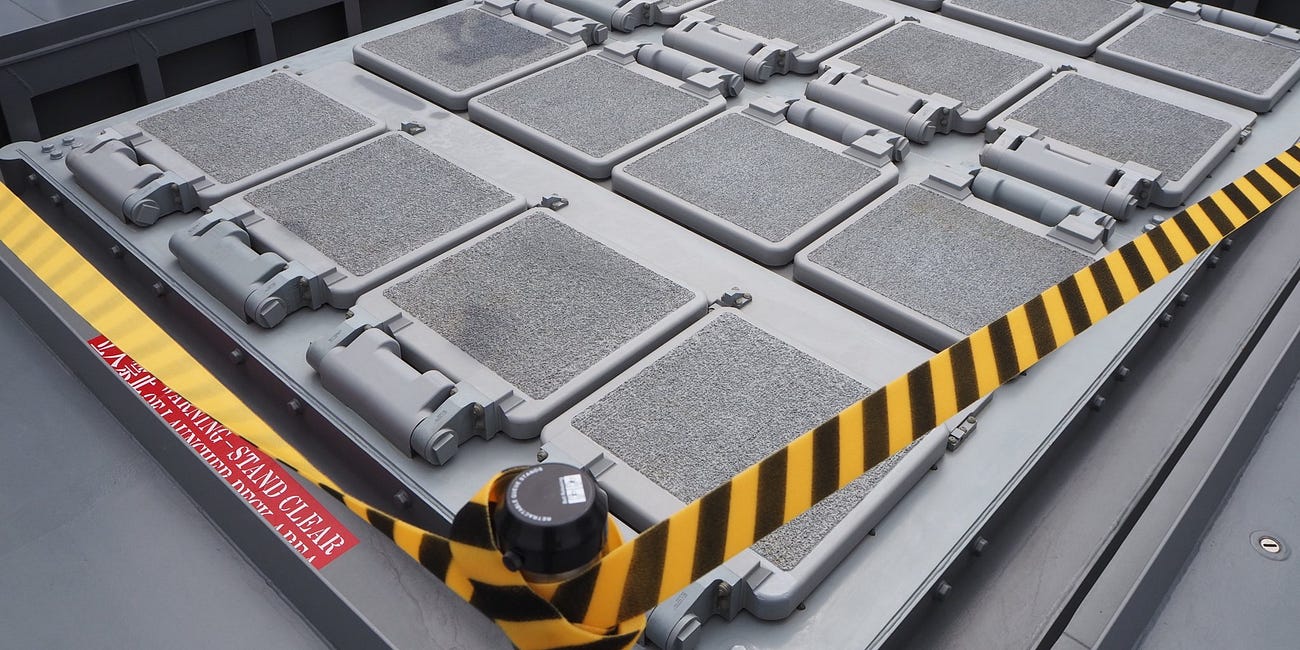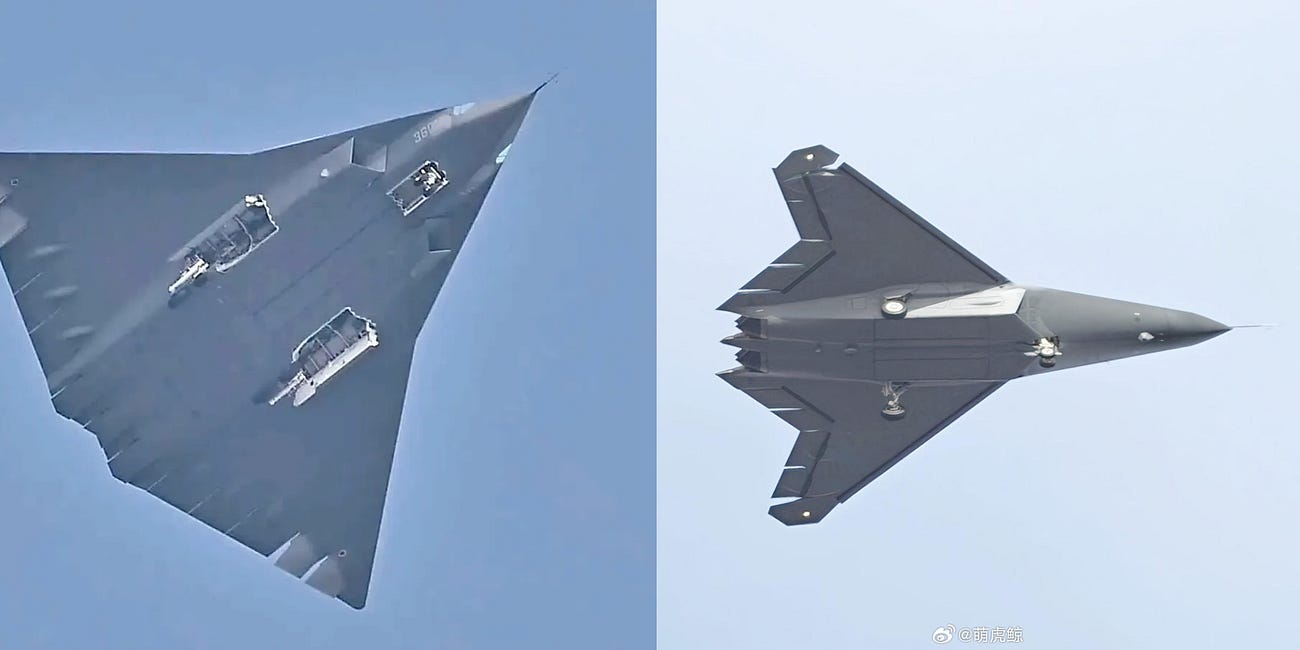The Externalities Of Intensifying China-U.S. Military-Technological Competition In South Asia
🇨🇳 🇮🇳 🇵🇰 Extensions
This extensions-themed post is an extension of material that has appeared in another newsletter/section and other parts of my website more generally. My newsletters/sections are primarily categorized by region and my posts can only appear in one newsletter/section at a time given how the Substack platform is configured. Extensions-themed posts are intended to highlight content posted in other newsletters/sections that may be highly relevant to readers who are primarily interested in other parts of the world.
In several recent posts that appear in my China newsletter/section, I have discussed some of the externalities of the intensifying military-technological competition between China and the United States, a dynamic that is likely to leave many countries behind in the dust. The externalities of this intensifying military-technological competition are likely to be found in South Asia in the context of both China-India military dynamics and India-Pakistan military dynamics. In two recent posts, I discussed the implications of China’s unveiling of six new anti-ship munitions at the recent military parade in Beijing. The first post focuses on the implications for Southeast Asian countries, while the second focuses on the implications for Japan. While India and Japan are not in the same situation—India is actually in a somewhat better position than Japan for reasons that are rooted in the idiosyncrasies of Japanese naval force planning in recent decades—I think the Japanese experience will be instructive as to the challenges every country that is not named the United States of America is likely to face amid intensifying military-technological competition between China and the United States.
It remains to be seen whether China is willing to export any of these new anti-ship munitions to Pakistan. The new YJ-15 supersonic ramjet-powered anti-ship cruise missile is, I think, a likely candidate for transfer to Pakistan. Should any of the longer-range anti-ship munitions, namely the YJ-17, YJ-19, and YJ-20, be transferred to Pakistan alongside the requisite maritime intelligence, surveillance, and reconnaissance capabilities, India may be forced to rethink how it plans to employ its aircraft carriers in the Arabian Sea. More generally, India needs to rethink how it plans to employ its aircraft carriers in the eastern half of the Indian Ocean and perhaps the South China Sea. China has already secured a major qualitative advantage over India in carrier-borne naval aviation. Five of the six new Chinese anti-ship munitions are carried by carrier-borne aircraft, warships, or submarines, and are therefore relevant to China-India naval dynamics.
Unveiling Of Six New Chinese Anti-Ship Munitions Highlights A Transformed Regional Naval Balance
The major military parade held in Beijing on 3 September 2025 served as an opportunity for China to unveil no fewer than six qualitatively distinct anti-ship munitions. While a significant development in and of itself and a significant development for the all-important China-United States military balance, the unveiling and presumed operational status o…
Japan's Navy Is Poorly Positioned To Respond To Growing Threat Posed By New Chinese Anti-Ship Munitions
The major military parade held in Beijing on 3 September 2025 served as an opportunity for China to unveil no fewer than six qualitatively distinct anti-ship munitions. As I explained in a recent post, the unveiling and presumed operational status of such a diverse array of anti-ship munitions is driving a transformation of the regional naval balance in…
In a third post, I discussed how the intensifying China-United States military-technological competition in the area of fighter aircraft technology risks leaving essentially every other country behind in the dust. This is a dynamic that is already reshaping military dynamics in South Asia. Pakistan is reportedly interested in China’s low-observable J-35A fighter, which has recently entered service with the People’s Liberation Army Air Force—the catapult-launched carrier-borne version, the J-35, is in service with the People’s Liberation Army Navy. The deployment of increasing numbers of low-observable J-35 and J-20 fighter aircraft, among other systems, is fast reshaping air combat dynamics in the Himalayas and may soon also reshape India-Pakistan air combat dynamics beyond what the presence of JF-17 Block III and J-10CE fighter aircraft, as well as PL-15/PL-15E long-range air-to-air missiles, in the Pakistan Air Force’s arsenal has already brought about.
It is important to recognize that all of the aforementioned Chinese-designed air combat systems are lagging indicators of Chinese military technology and Chinese military capabilities. China and the United States are locked in an intensifying military-technological competition in fighter aircraft technology, one that threatens to leave India behind in the dust alongside many other countries unless India can, in effect, replicate China’s performance in rapidly closing the technological gap with the United States over a several-decade timeframe. While the India of 2025 is in a far better position to do so than the China of ca. 1990, this is likely to be a long-term and uphill struggle, a dynamic that observers of the subcontinent will likely be very familiar with, given ongoing challenges and delays in India’s indigenous fighter aircraft and jet engine development and manufacturing. Leading indicators of Chinese air combat capabilities, namely the provisionally and unofficially designated J-36 and J-50, underscore the scope of the challenge that India now faces at a time when additional non-low-observable Tejas and Rafale fighter aircraft—new-build aircraft that enter service now will likely remain in service well into the 2050s—are being pursued as the answer to the Indian Air Force’s long-rooted shortcomings.
In Fighter Aircraft Technology, As With Other Areas, China And United States Leave Others Behind In The Dust
In two recent posts, I explained how major developments in China’s maritime strike capabilities, which are exemplified by the recent unveiling of six anti-ship munitions at the 3 September military parade in Beijing, leave most of China’s neighbours unable to keep up and deploy credible naval forces for the foreseeable future.




